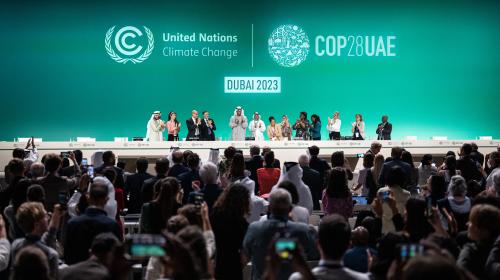Introduction
The likelihood that the Kyoto Protocol will achieve significant real reductions in
greenhouse gas emissions is very low. The United States withdrew from the protocol in March
2001, a move which was angrily denounced by surprised commentators in Europe and around the
world. It was described as arrogant, isolationist, and a “betrayal [by the Bush Administration] of
their responsibilities as global citizens”. Yet the announcement was really nothing more than a
blunt public acknowledgment of a fact that was well known within the policy community: the
Kyoto Protocol was already dead in the United States. The U.S. Senate, which must ratify all
international treaties by a two-thirds majority, overwhelmingly opposed the protocol and had
voted 95-0 against U.S. participation as early as July 1997, five months before the protocol was
signed. Opposition was so great that the Clinton Administration, which negotiated and signed
the protocol, never bothered to submit it to the Senate for ratification. Even if the Bush
Administration had enthusiastically supported the treaty — which it did not — there was little it
could have done.
What doomed the protocol in the Senate is a critical flaw in its design: it requires each
participating industrialized country to agree to achieve a specified emissions target regardless of
the cost of doing so. The focus on rigid targets also makes the treaty impractical as a long-term
climate policy for the rest of the world as well. Because the costs of reducing emissions are
unknown and could be very large, countries with substantial emissions have insisted on
increasingly lax targets as a condition for their continued participation. Japan, Canada and Russia, for example, were able to negotiate large increases in their “sink” allowances during
COP6bis, held in Bonn, and COP7, held in Marrakesh. Between the U.S. withdrawal and the
increase in sink allowances, the protocol has been relaxed substantially. The effect on estimated
emissions permit prices in the 2008-2012 period is dramatic. Relative to the original Kyoto
agreement, permit prices are likely to be reduced by 14 percent (Bohringer, 2001) to 85 percent
(Kemfert, 2001).
In this paper we update our earlier estimates of the cost of the Kyoto Protocol using the
G-Cubed model, taking into account the new sink allowances from recent negotiations as well as
allowing for multiple gases and new land clearing estimates. We then move on to the paper’s
main topic, which is an examination of the protocol’s core flaw — the sensitivity of compliance
costs to unexpected changes in future economic conditions. To explore this point we consider
two plausible alternative assumptions about a single aspect of the future world economy and
evaluate the protocol under each assumption. The two cases we examine are: (1) moderate
productivity growth in Russia sufficient to produce a 3.24% average rate of economic growth
from 2000 to 2012; and (2) higher productivity growth leading to a 4.24% average rate of
economic growth over 2000 to 2012. Comparing the two sets of results shows the sensitivity of
greenhouse gas abatement costs to variables that are very difficult to predict. The cost of the protocol in foregone GNP, for example, varies by up to 50 percent. The comparison thus
illustrates the risks created by the protocol’s focus on rigid emissions targets.




